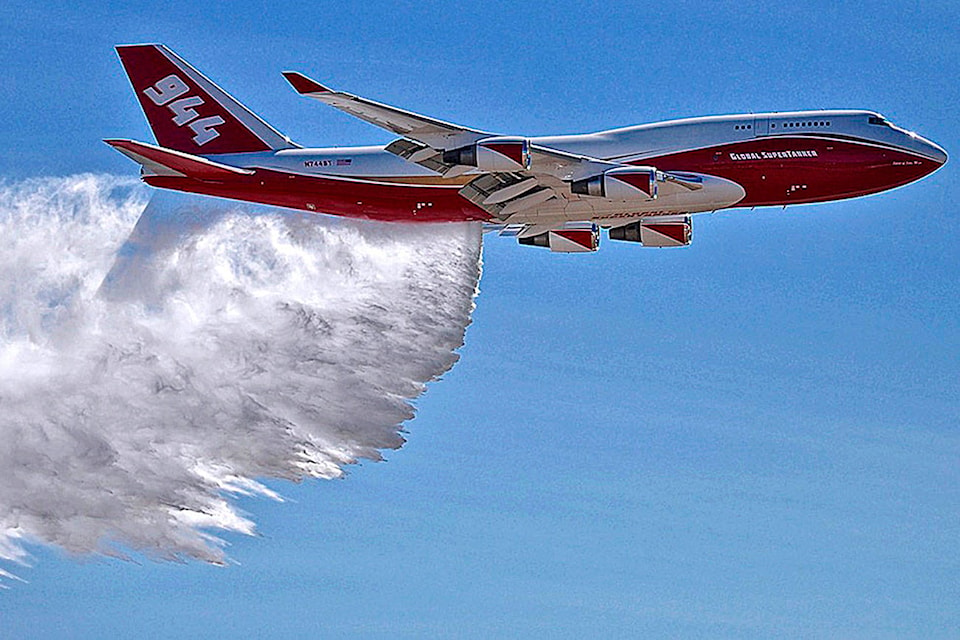It should not come as a surprise that the Boeing 747 can be used as a water bomber since it has been used for many other heavy lifting projects.
The aircraft has been used for lifting the space shuttle into the atmosphere for its first landing test flights or passengers (over 600 per trip in some versions), in addition to hauling tons of freight for many years.
Between 1966 and 2017 there have been 1536 planes constructed (including over 20 different models).
There are a number of YouTube videos of its use as a water bomber in Australia, South America and the United States. The stats were quite impressive: 74,000 litre pay load, ability to land with a full load if the mission was cancelled, pressurized delivery of a variety of payloads, water, foam, gel or fire retardant.
The travel speed and slow delivery and safety due to the pattern of dispersal were also impressive.
The American version, (Evergreen International 747 super tanker) boasts a cruising speed of 600 mph to the fire and the ability of slowing to 160 miles per hour during delivery between 400 to 800 feet above the fire. It can cover a continuous swath (three miles long and 50 yards wide) or deliver in segments as needed.
There is no mention of the drop costs but as they say since it carries seven times the payload as the closest competitor and with a central air force base it is within two and a half hours from anywhere in the continental USA they claim it could save 25 per cent on traditional water bomber costs.
Newer versions are supposed to be equipped with infrared sensors which would assist a more precise delivery when there is heavy smoke.
The 747 needs a long airstrip for takeoff and landing (up to 2400 meters).
The landing field at Puntzi Lake, while very central, is only 1,800 meters long but could probably be extended easily due to the lay of the land.
As impressive as these planes are there will no doubt be a wide range of opinions as to how much difference it would have made on the outcomes of the July 2017 lighting storms but if just one of the major wildfires had been controlled in the early stages it may have justified the additional costs of this type of technology.
Successful early initial attack also includes a quick response with ground crews which means having more resources than were available during the early stages of the dry lightning storms this year.
If hot, dry conditions are to be the new normal in North America and around the world it would be wise to take a close look at the most cost effective changes that could be made to control wildfires.
After hearing some comments from the rural residents it would seem prudent to consider training and supporting a more decentralized approach to the initial attack phase of firefighting.
There are also concerns about the impact of safety rules and regulations on local contractors and residents as well as how to better protect people fighting the fires such as developing more escape routes and constructing permanent fire breaks.
